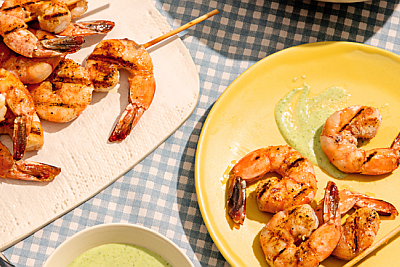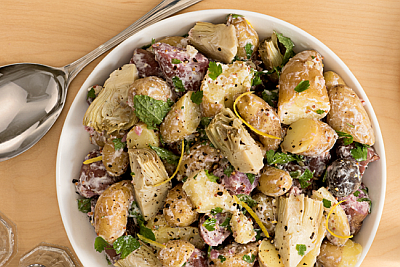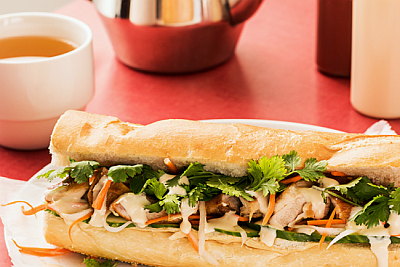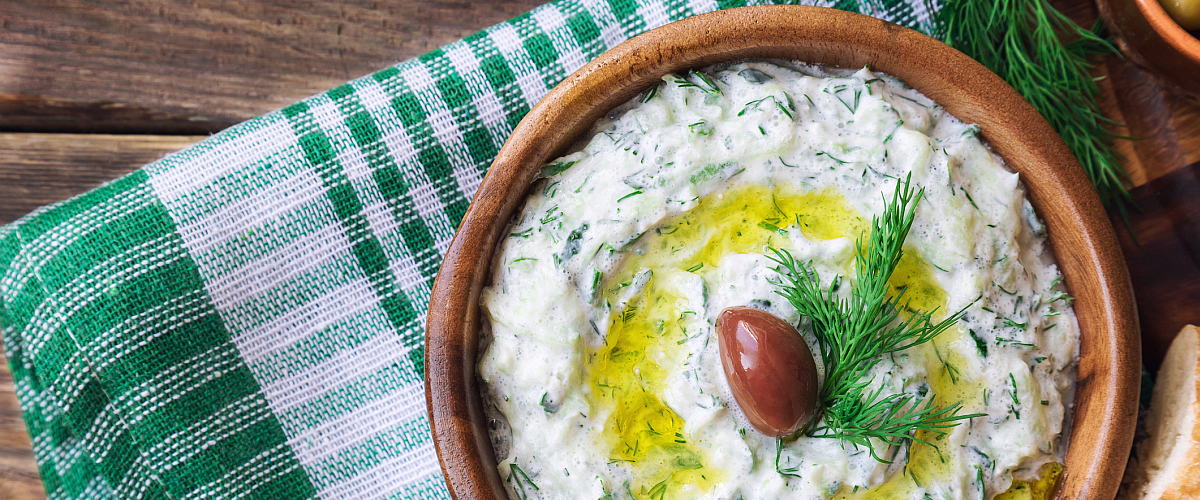Greek yogurt has quickly become one of America’s favorite healthy foods and it’s easy to see why. Every creamy bite delivers a delicious taste along with calcium, essential nutrients and an excellent source of high-quality protein. Layer it between granola and berries, top with a drizzle of honey and you’re bound to have a good morning.
But, if you’re like many of us after a few parfaits and smoothies, you begin to wonder: What else can I make with this tasty tub?
Thankfully, our partners at Chobani are here to take us beyond our typical Greek yogurt breakfast and into a world of endless culinary creations. Chobani’s Corporate Chef Jake Briere dishes on how to use this incredibly versatile and nutrient-dense ingredient in unexpected ways.
SPOONFULS OF GOODNESS

First things first. What makes yogurt Greek yogurt? The experts at Chobani share that authentic Greek yogurt is made through a special straining process, which takes three cups of milk to make one cup of Greek yogurt. The results? A thick and creamy, high-protein yogurt with other essential nutrients. Chef Jake calls it, “an ingredient to have on hand at all times.” Here’s why.
1. Stellar Nutrition
Most notably, Greek yogurt is high in protein and provides a nutrient-dense profile. One 6-ounce serving provides about a third (32% daily value) of an adult’s protein needs. Some Greek yogurt also contains live and active cultures, including probiotics that support digestive and immune health. And you may not know that Greek yogurt is actually a naturally low-sodium food, as we know from previous conversations with the American Heart Association. Diets low in sodium can protect heart health.
Swap low or reduced-fat Greek yogurt for high-fat ingredients and the picture becomes even brighter. “Greek yogurt offers more nutrition and usually fewer calories when swapped with an equal amount of cream, sour cream, or mayo,” Chef Jake shares. “When you cook with Greek yogurt, it’s bound to improve the overall nutrition in the dish.”
2. Depth of Flavor
Greek yogurt complements almost any recipe, sweet or savory. “Greek yogurt has this sharp, tangy flavor. The acidity and umami flavors round out other ingredients in your dish,” explains Chef Jake. He particularly likes the way it cools down traditionally spicy foods like tacos and chili.

3. Versatility
Smoothies and parfaits are great, but Chef Jake wants you to think bigger. “Years of cooking with Greek yogurt have really opened up my ideas on how to use it,” he shares. For starters, its thick texture is great for sauces, salad dressings, spreads, and dips. It lends a delicious note to baked goods. And its moisture and lactic acid make it an effective marinade, helping to impart flavor to meat, poultry, and seafood. (Who knew Greek yogurt could do all that?!)
GIVING GREEK YOGURT A SPIN
Chef Jake says there are a few key things to know before cooking with Greek yogurt.
Learn the exchange rate. For the most part, you can use traditional and Greek yogurt interchangeably in recipes. “The extra creaminess of Greek yogurt will be the biggest difference—but that’s a good thing,” Chef Jake notes. “Keep an eye on total sugar content, too, and how that might affect the result.”
The equation gets a little trickier when you’re substituting Greek yogurt for other ingredients. “The one-to-one approach still works for sauces and spreads. But with baking it might be closer to 50% because of the change in volume and consistency,” Chef Jake advises. “As you start to play around and build up your confidence, remember that less is more. It’s much easier to add more if you need to than it is to take out.”

Carefully choose your cookware. Greek yogurt’s acidity might do a number on your treasured cast iron pans. Go with stainless steel if you’re making a yogurt-heavy sauce recipe.
Keep curdles at bay. Some home cooks are hesitant to heat dairy products for fear of curdling. Chef Jake says it’s all about adding the yogurt at the right time.
“Just be super-aware of your temperature control. Anything above 180 degrees Fahrenheit is likely to split Greek yogurt,” says Chef Jake. He recommends removing your pot or pan from the heat source, letting it cool a bit, then stirring in the yogurt. Adding ingredients like cornstarch, flour, or egg can help the yogurt stand up to high temperatures if needed.
Honor its roots. Greek yogurt was born in the Mediterranean, so you can’t go wrong with those flavor profiles. “Think simple, high quality ingredients like lemon, garlic, fresh herbs, and spices—like in Mediterranean culture,” Chef Jake suggests.
BEYOND BREAKFAST
We now know the nutritional wins of Greek yogurt and a few best-practices for cooking with it in the kitchen. But what recipes should we start to practice with? Chef Jake and the folks at Chobani served up these three savory recipes, all featuring the star of our show.
| Use | Chobani Recipes | Why We Love It |
| Sauce | Ginger Miso Sauce | This rich sauce adds a tart kick to sandwiches, grilled chicken, or fish—anything that invites Asian flavors. |
| Marinade | Grilled Coconut Shrimp | These shrimp skewers will take your taste buds to the tropics. “Marinades are an often- overlooked way to use Greek yogurt. The acidity tenderizes food super-fast. It’s a real time saver,” Chef Jake notes. |
| Salad Dressing | Artichoke Potato Salad | Delivering flavor from fresh garden herbs, this all-time favorite with a lemon- artichoke twist is a must. |
Whether you’re going for the unique flavor or the nutritional benefits—or hey, because you have it in the fridge—we hope Greek yogurt will earn a place in your cooking routine.
“It’s so easy to use,” Chef Jake encourages. “Just go for it and start experimenting!”
Check out more recipes that call for Greek yogurt in our recipes section!
Note: Since everyone’s health history and nutritional needs are so different, please make sure that you talk with your doctor and a registered dietitian to get advice about the diet and exercise plan that‘s right for you.

